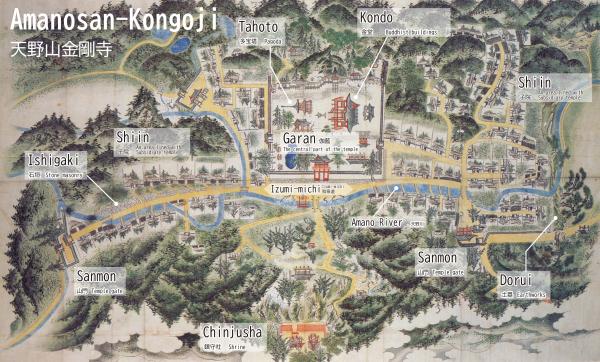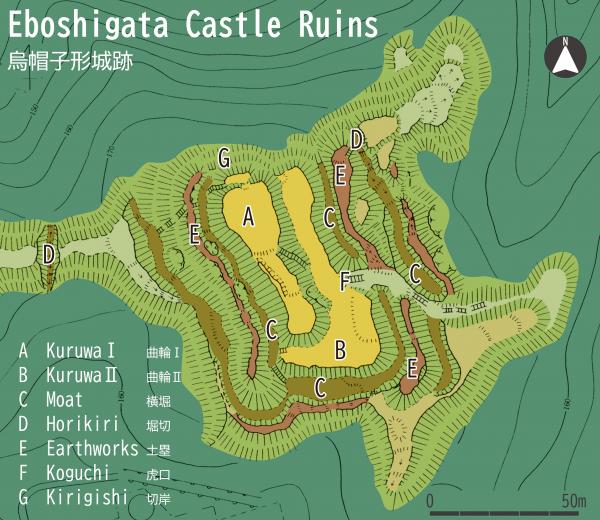本文
Falling for the Middle Ages – Connecting Through History in Kawachinagano
Falling for the Middle Ages – Connecting Through History in Kawachinagano
One can find Japan's Representative Historical and Cultural Heritage in Kawachinagano City.The rich medieval cultural heritage is especially prevalent.In this section, we will introduce three medieval historical sites - Kanshinji Temple, Kongoji Temple, and Eboshigata Castle ruins - and convey their appeal.
Kanshinji Temple
Kanshinji Temple is located in the northeastern part of Kawachinagano City and was founded as Unshinji Temple by En no Gyouja during the Asuka period.
Later, Koubo Daishi Kukai directed his disciples Jichie and Shinsho to develop the temple into Kanshinji Temple.
In addition, the temple was officially recognized by the Imperial Court, and in 836, the Imperial Court granted the surrounding land to Kanshinji Temple as a fief. From then on, Kanshinji Temple managed and controlled the territory throughout the Middle Ages.
Today, the grounds of Kanshinji Temple contain structures such as Kondo (National Treasure), Tatekaketou (Important Cultural Property), and the Kariteimotenndou (Important Cultural Property). However, in the past, there were many more buildings and subsidiary temples within the temple grounds.
Kanshinji controlled the surrounding manors throughout the Middle Ages. A manor means privately owned land. However, it was different from private land in the modern sense. Manors continued to exist from the Nara period to the Sengoku period, although their structure changed little by little. The social system based on manors was called the manor system, and supported medieval Japanese society. Kanshinji's old documents show how the manor system changed over time.
Until around the 9th century, manors were called "early manors." According to the Kanshinji Engi Shizaicho (National Treasure), in 836, Kanshinji was granted ownership of 15 hectares of land, which became the foundation of the Kanshinji temple's early manors.
From the 10th century onwards, "menden-gata manors" appeared. These manors were exempt from paying taxes to the state. Kanshinji's manors also became exempt from various taxes.
This is how Kanshinji's medieval manor, Shichigo, was established.
Kongoji Temple
Kongoji Temple is located in the southwestern part of Kawachinagano City and is said to have been founded by Gyoki during the Nara period. After that, It was developed by Akan at the end of the Heian period.
In the case of Kongoji Temple, the powerful samurai, Minamoto no Sadahiro, donated cultivated land he had developed to the temple, which led to the formation of Kongoji Temple's territory.
In the Middle Ages, Kongo-ji Temple was not just a religious facility, but also a commercial city and an administrative center. It also functioned as an institution of higher education and a military facility.
The central part of the temple, called the Garan, is surrounded by a particularly high roofed mud wall and contains a huge structure and tower inside.The Garan was a place for holding rituals, as well as a place for academic study and politics.The Garan is surrounded by a number of subsidiary temples called sub-temples. During the Sengoku period, there were nearly 100 sub-temples.
Kongoji Temple was also connected to Sakai, which was a trading port at the time, and Mount Koya via the Izumi Road, meaning that it controlled a major transportation route.
The entire temple grounds are surrounded by hills and earthworks, and the entrance to the valley is closed off with a gate and earthen walls. For these reasons, Kongoji Temple can be called an impregnable fortress city.
Eboshigata Castle Ruins
Eboshigata Castle was built by the Hatakeyama clan, feudal lords who ruled Kawachi region in the latter half of the Muromachi period. It was later used by the Miyoshi clan, Oda clan, and Toyotomi clan, who had expanded into the Kinai region.
The castle is surrounded by huge earthworks and impressive moats. From the Shukaku, the center of the castle, you can see the entire Osaka Plain, including many mountain castles and major transportation routes.



